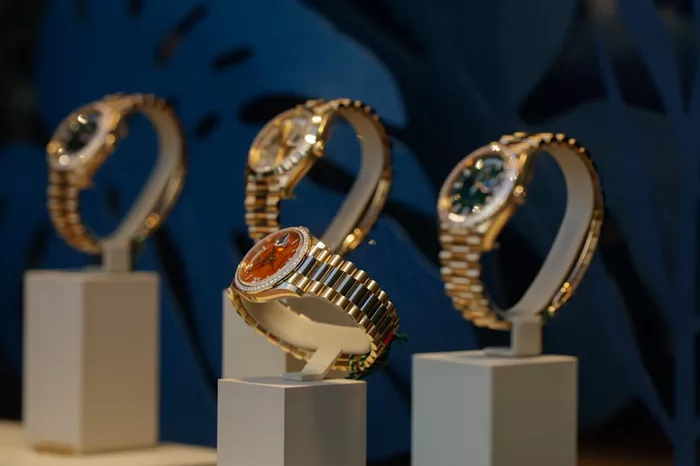Luxury watchmakers are facing increasing pressure as soaring gold prices have significantly raised production costs. Over the past year, gold prices have surged by 40%, from approximately $2,300 per ounce to around $3,300, creating a major headache for brands heavily reliant on the precious metal. With stock markets remaining volatile, few analysts expect a price correction soon.
According to the Federation of the Swiss Watch Industry, watches made from precious metals, such as gold and platinum, represented nearly 40% of Swiss watch exports by value last year, although they accounted for just 2.7% of total volume. This reliance on gold has put many luxury watch companies in a tough spot.
In response to the escalating costs, many brands have increased prices. Rolex, the largest player in the Swiss watch industry, raised the price of its gold models by 8% at the start of this year, following two previous price hikes in 2024. A second increase is expected in the coming weeks. Some brands, such as Cartier, have reduced their inventories of gold watches, with a significant drop in prices as a result. Data from the Geneva-based Digital Luxury Group revealed that Cartier’s gold watches saw an average price decline of 30.4% in April, alongside a 63.8% reduction in available models.
The situation is further exacerbated by global economic shifts. Following US President Donald Trump’s tariff announcements in April, luxury watch prices increased more sharply, particularly for watches priced over $100,000. Rose gold models, for instance, saw a 23.5% price jump, with a corresponding 16.4% drop in available inventory.
Smaller brands, such as independent Swiss watchmaker H. Moser & Cie, are struggling to manage the high costs. CEO Edouard Meylan explained that his company is using gold purchased last year and avoiding new gold orders unless absolutely necessary. Despite this, demand for gold watches, especially rose gold, remains high among collectors and investors.
Meanwhile, the World Gold Council reports that global gold demand from the jewelry sector decreased from 538.5 tonnes in Q1 2024 to 434 tonnes in the same period this year. However, overall gold demand increased by 1%, driven largely by a 170% rise in gold investment.
For some companies, the only viable option is to continue raising prices. Zenith, a Swiss luxury watch brand under LVMH, has already increased prices and anticipates another round of hikes. Romain Marietta, Zenith’s chief products officer, noted that gold watches, particularly those made from white gold, have become too expensive for mass production. The high cost of raw materials now results in retail prices that are uncompetitive against brands producing gold watches in larger quantities.
Analysts predict that the price surge will benefit some brands more than others. “The most desirable brands will be able to weather this storm—Rolex, for example,” said Luca Solca, senior analyst at Bernstein. “Lower-tier brands, however, will need to adjust to reduced volumes and focus on cost-cutting.”
The impact of price sensitivity is being reconsidered, with some brands noting that even high-end buyers are becoming more cautious. Marietta pointed out that previous assumptions that wealthy collectors would remain unaffected by price hikes may need to be reevaluated.
In response, brands are exploring alternative materials. Zenith is focusing on metals such as platinum and tantalum, which are rarer and may offer better margins than gold. Meanwhile, H. Moser & Cie’s Meylan predicts a shift away from white gold toward more affordable materials like steel, palladium, and tantalum.
Despite these adjustments, some retailers, including Mohammed Seddiqi of Ahmed Seddiqi, a prominent UAE-based watch retailer, report that demand for gold watches remains inelastic. “Clients who are keen collectors continue to acquire gold timepieces, and we believe supply will remain consistent,” he said.
Looking ahead, the pre-owned market may also see price shifts, although analysts like Charles Tian from WatchCharts note that the impact of rising gold prices on the secondary market has yet to be significant. Tian points out that while the value of gold in a watch has increased, it doesn’t substantially affect the overall value of high-end timepieces, which continue to perform well in the market.
As gold prices continue to climb, luxury watchmakers face a delicate balancing act: manage rising production costs while maintaining the allure and exclusivity that drive their business.


